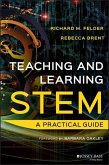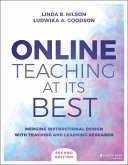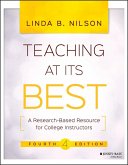Rethink traditional teaching methods to improve student learning and retention in STEM Educational research has repeatedly shown that compared to traditional teacher-centered instruction, certain learner-centered methods lead to improved learning outcomes, greater development of critical high-level skills, and increased retention in science, technology, engineering, and mathematics (STEM) disciplines. Teaching and Learning STEM presents a trove of practical research-based strategies for designing and teaching STEM courses at the university, community college, and high school levels. The book draws on the authors' extensive backgrounds and decades of experience in STEM education and faculty development. Its engaging and well-illustrated descriptions will equip you to implement the strategies in your courses and to deal effectively with problems (including student resistance) that might occur in the implementation. The book will help you: * Plan and conduct class sessions in which students are actively engaged, no matter how large the class is * Make good use of technology in face-to-face, online, and hybrid courses and flipped classrooms * Assess how well students are acquiring the knowledge, skills, and conceptual understanding the course is designed to teach * Help students develop expert problem-solving skills and skills in communication, creative thinking, critical thinking, high-performance teamwork, and self-directed learning * Meet the learning needs of STEM students with a broad diversity of attributes and backgrounds The strategies presented in Teaching and Learning STEM don't require revolutionary time-intensive changes in your teaching, but rather a gradual integration of traditional and new methods. The result will be continual improvement in your teaching and your students' learning. More information about Teaching and Learning STEM can be found at http://educationdesignsinc.com/book including its preface, foreword, table of contents, first chapter, a reading guide, and reviews in 10 prominent STEM education journals.
Dieser Download kann aus rechtlichen Gründen nur mit Rechnungsadresse in A, B, BG, CY, CZ, D, DK, EW, E, FIN, F, GR, HR, H, IRL, I, LT, L, LR, M, NL, PL, P, R, S, SLO, SK ausgeliefert werden.
"what makes this particular book useful is its STEM context. I appreciated the STEM-specific examples, the short and easy-to-understand descriptions of teaching strategies and the advice about the steps I could take to implement them in my courses without investing excessive amounts of time or effort. I felt as though an experienced and realistic colleague were giving me advice about how to improve my teaching, and isn't that the best way to get advice?" (Education in Chemistry 2016)









